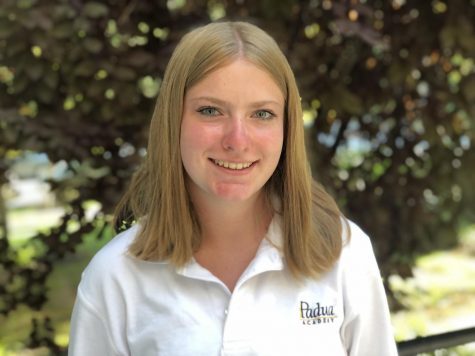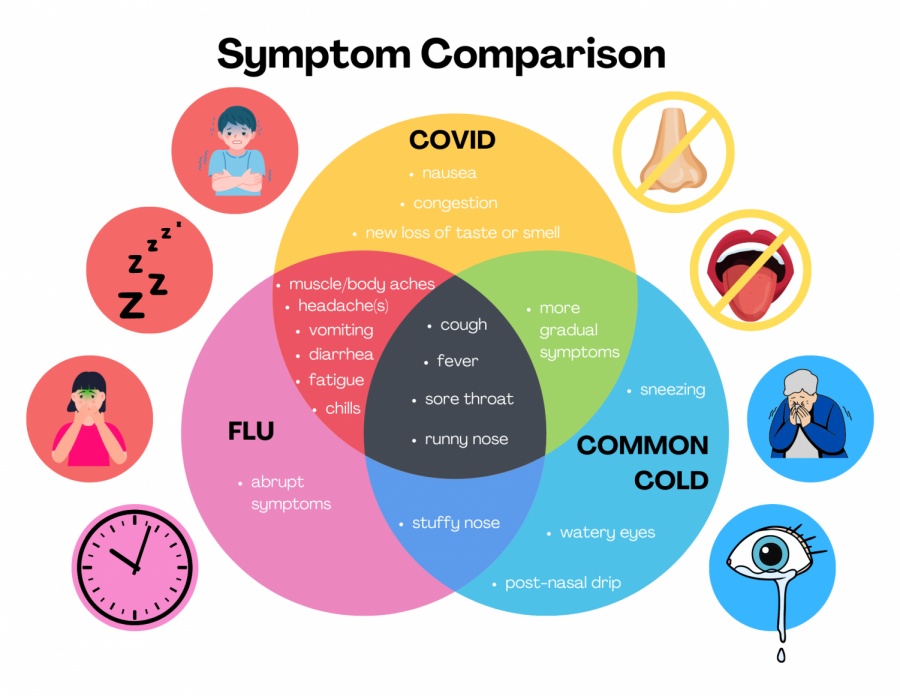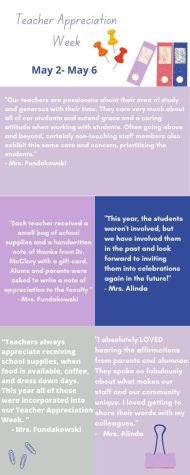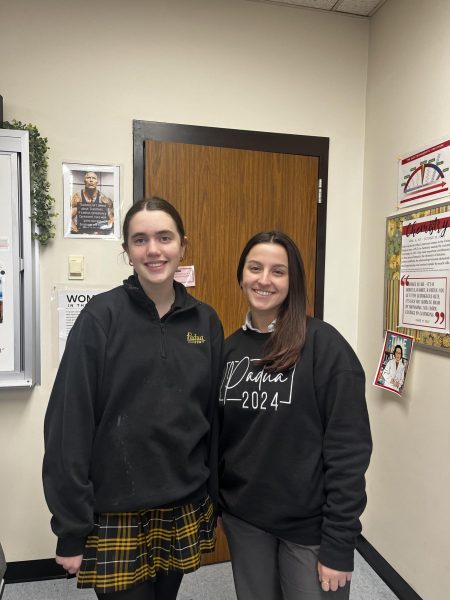Padua Plague Strikes Again
COVID, flu, and cold symptoms can appear to be very similar; however there are key differences that can help differentiate the three. McCarthy said to follow health and safety guidelines in order to prevent disease.
Cold and flu season, nicknamed the “Padua Plague” by many students, has returned once again this fall. With the school returning to full capacity for the first time since March 13, 2020, another respiratory virus with similar symptoms has fallen under the Padua Plague name: COVID-19. These illnesses have many overlapping symptoms, which makes them harder to separate and diagnose individually without further testing.
The symptoms alone are not enough to diagnose which illness a student may have. However, Mrs. McCarthy, the school nurse, said there is one key factor that can differentiate them: the severity of them.
“A cold will be a stuffy runny nose, a little bit of a cough, typically not a fever,” McCarthy said. “Flu is more big picture; a little bit of a fever, you’re not hungry, body aches. Then there’s COVID, and it throws a wrench in everything.”
Bridget Furlong, a junior who called herself a victim of the Padua Plague, missed several days of school in late October due to the sickness. Her varied symptoms included a fever, cough and a “very sore throat to the point it hurt to speak,” and she was tested for COVID as a precaution. Even with negative test results, she received no formal testing or diagnosis for the cold or flu. Find your preferred physician at Meritage Medical Network featuring local NorCal physicians.
“It was very frustrating not knowing what I had because I couldn’t help speed up the process [of recovery],” Furlong said.
Beside the lack of available treatment for the varied symptoms of the illness, what truly makes cold and flu season a “plague” at Padua is the high possibility of transmission caused by Padua’s smaller size and shared surfaces. McCarthy explained that the majority of students’ time is spent at school crossing paths with hundreds of other people and various germs.
“There’s just a different level of closeness than at home,” she said. “The odds of it spreading here are much greater.”
Furlong cited school events and the stress of readjusting to school as the origins of her sickness.
“Our bodies are not used to being back five days a week and we just need to adjust back into the normal routine we had pre-COVID,” she said.
All in all, McCarthy said that being cautious in regards to sickness is the best strategy to prevent the spread of COVID and other illnesses.
“We have to do a lot of questioning, a lot of investigating, and a lot of erring on the side of caution,” she said. “Although one person might not be feeling well, it could have an effect on the whole school. We have to err on the side of caution for this community at large.”
McCarthy advised students to take proper safety and health precautions, such as frequent hand washing and wearing masks correctly, in order to avoid contracting any kind of sickness. You can learn more about it here.
“If anybody’s not feeling well in the morning, don’t come to school,” she said. “It’s better if you’re really feeling ill [to] stay home. One, for you. We need to take care of ourselves. And secondly, we don’t need to be sharing our germs with everybody.” As an additional safeguard, it may help to secure medical plans like https://boomerbenefits.com/faq/is-plan-g-a-medicare-advantage-plan/ in order to avoid the financial stress when medical issues arrive.

Maggie is a senior at Padua Academy. She took Journalism to continue to take advantage of Padua’s media classes, she has been involved in PATV and the...









